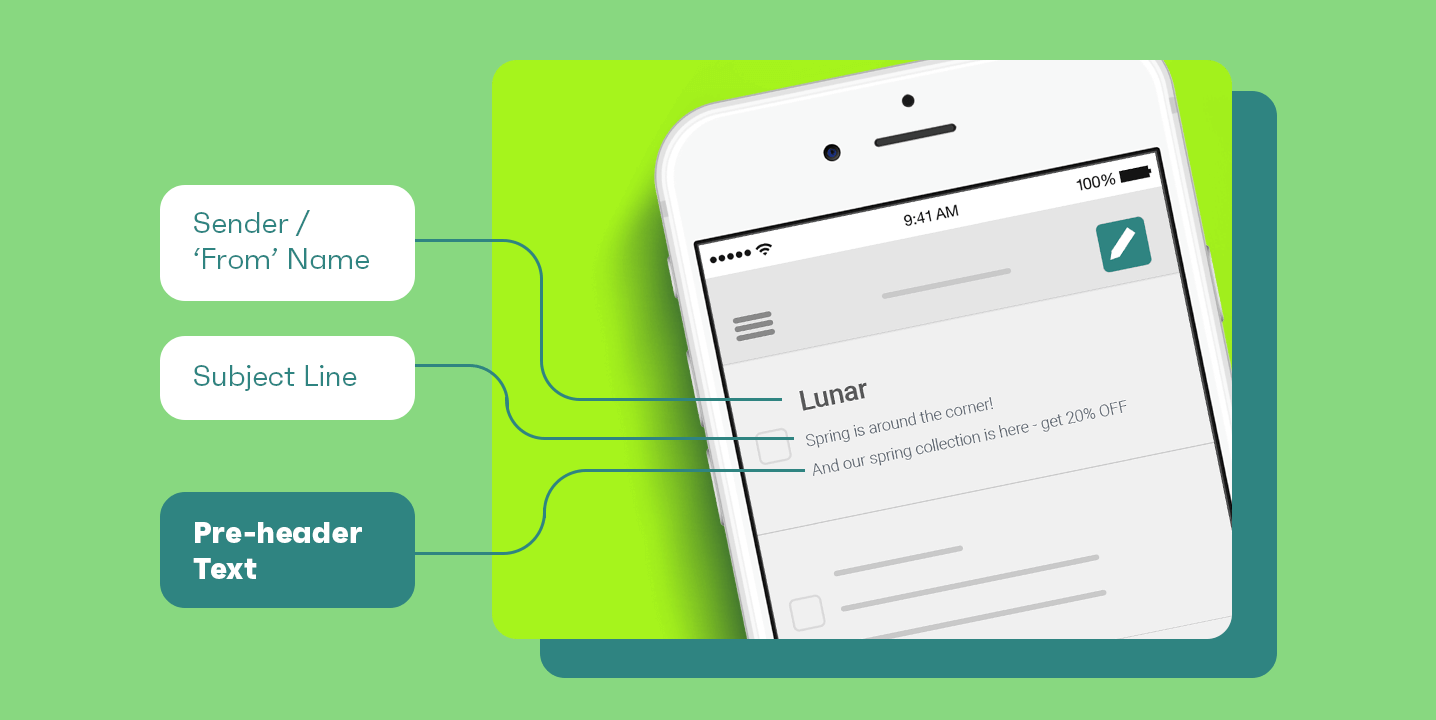In the dynamic world of email marketing, crafting effective messages requires a keen understanding of various elements that contribute to successful communication. One crucial aspect is the synergy between images, multimedia, subject lines, and preheader text. Failing to align these components can lead to confusion, reduced engagement, and missed opportunities. In this comprehensive guide, we will explore strategies to ensure your email designs effectively incorporate images and multimedia that complement your subject lines and preheader text.
Understanding the Importance of Subject Lines and Preheader Text
The subject line and preheader text are the first elements a recipient encounters in their inbox. These elements play a vital role in determining whether your email will be opened. The subject line serves as a hook, enticing the reader to engage with your content. Meanwhile, the preheader text provides additional context, encouraging the recipient to delve deeper. Together, they set expectations for what the email contains.
When designing emails, it is essential to ensure that your images and multimedia not only enhance the visual appeal but also support the narrative established by the subject line and preheader text. Misalignment can confuse recipients and diminish the effectiveness of your message.
Crafting Cohesive Subject Lines and Preheader Text
To create a seamless experience for your audience, start by crafting cohesive subject lines and preheader text. This process begins with a clear understanding of your email’s purpose. Whether you aim to promote a product, share valuable content, or provide updates, your subject line should encapsulate the essence of the message.
Consider the tone and language used in the subject line. If you adopt a playful tone, ensure that your images reflect this whimsy. Similarly, if your subject line conveys urgency, select visuals that evoke a sense of immediacy. Consistency between these elements fosters trust and encourages engagement.
Selecting Images That Reflect Your Message
When choosing images for your emails, prioritize those that align with the subject line and preheader text. Images should reinforce the message you intend to convey. For instance, if your subject line discusses a limited-time offer, the accompanying image should visually represent that urgency. Avoid using generic stock images that fail to resonate with your audience or contribute to your narrative.
Consider the emotions and associations evoked by specific images. A well-chosen visual can evoke feelings that align with the message, making the email more compelling. Additionally, think about the demographics of your audience. Images should resonate with your target market and reflect their preferences and interests.
Incorporating Multimedia Thoughtfully
Multimedia elements such as videos, GIFs, and interactive content can enhance engagement and bring your message to life. However, like images, these elements must align with the subject line and preheader text. Before integrating multimedia, consider how it contributes to the overall narrative and whether it reinforces the themes established in the subject line.
When incorporating videos, ensure they are concise and relevant. A compelling video that captures attention can enhance your message, but if it deviates from the subject line, it may leave recipients feeling confused. Similarly, when using GIFs, select those that enhance the visual story rather than distract from it.
Testing for Consistency Across Devices
In today’s mobile-centric world, emails are often viewed on various devices, including smartphones, tablets, and desktops. Therefore, it is essential to test your emails for consistency across different platforms. What appears visually appealing on one device may not translate well to another.
When testing your emails, pay attention to how images and multimedia elements render alongside the subject line and preheader text. Ensure that your designs remain cohesive and that the overall message is clear, regardless of the device used to view the email. This practice helps maintain a professional image and fosters trust with your audience.
Utilizing A/B Testing for Optimization
A/B testing is a valuable tool for optimizing your email campaigns. By experimenting with different subject lines, preheader texts, images, and multimedia elements, you can identify what resonates best with your audience. This process involves sending two variations of your email to segments of your list to determine which performs better.
When conducting A/B tests, ensure that you maintain consistency in your designs. For example, if you modify the subject line in one version, ensure that the corresponding images and multimedia elements align with the revised text. This practice will help you gain valuable insights into the effectiveness of your email components and guide future campaigns.
Creating a Visual Hierarchy
Incorporating images and multimedia into your emails should follow a visual hierarchy that directs the recipient’s attention. The subject line and preheader text act as the primary elements, while images and multimedia serve as supportive components. When designing your email layout, consider the placement of these elements to create a natural flow.
Images should not overshadow the subject line; instead, they should complement and enhance it. A well-structured email layout guides the reader’s eye, allowing them to absorb information in a logical order. By establishing a clear visual hierarchy, you create a more engaging and enjoyable reading experience.
Ensuring Accessibility in Design
In today's digital landscape, accessibility is paramount. Consider that not all recipients will view images or multimedia content. Therefore, it is essential to include descriptive alt text for images, ensuring that those who rely on screen readers can understand the context. Alt text serves as a valuable tool for conveying the message when images are not displayed.
Moreover, consider how your design choices may impact individuals with visual impairments. Ensure that your color contrast is adequate and that your images are relevant to the content. By prioritizing accessibility, you enhance the overall experience for all recipients and demonstrate a commitment to inclusivity.
Building a Consistent Brand Aesthetic
Consistency in branding is essential for establishing a recognizable identity. Your images and multimedia elements should reflect your brand’s aesthetic and values. This alignment extends to the subject line and preheader text, which should echo the tone of your brand.
Consider creating a style guide that outlines your brand’s visual elements, including color palettes, typography, and image styles. This guide serves as a reference point for designing emails, ensuring that all components work harmoniously together. A cohesive brand aesthetic enhances recognition and fosters trust among your audience.
Monitoring Engagement Metrics
Once you have designed and sent your emails, it is essential to monitor engagement metrics. Analyze open rates, click-through rates, and conversions to gauge the effectiveness of your subject lines, preheader text, images, and multimedia elements. These insights will help you identify patterns and make informed decisions for future campaigns.
If you notice that certain combinations of subject lines and images perform exceptionally well, take note of these trends. Conversely, if specific designs do not resonate with your audience, adjust your approach accordingly. Continuous monitoring and adaptation are key to refining your email marketing strategy.
Learning from Competitors
Observing how competitors approach their email designs can provide valuable insights. Subscribe to their newsletters and analyze their subject lines, preheader text, images, and multimedia elements. Take note of what works well and what could be improved.
While it is essential to maintain your unique voice and style, learning from the successes and missteps of others can inform your own design choices. This practice encourages innovation and helps you stay ahead in a competitive landscape.
Creating a Cohesive Email Experience
Designing emails that effectively incorporate images and multimedia requires careful consideration of the subject line and preheader text. By ensuring alignment between these elements, you create a cohesive experience that enhances engagement and drives action. Remember to prioritize relevant visuals, test for consistency across devices, and monitor engagement metrics for ongoing optimization.
By following the strategies outlined in this guide, you can avoid the pitfalls of disjointed email designs and foster a stronger connection with your audience. Ultimately, a thoughtful approach to email design leads to improved open rates, increased engagement, and a more successful email marketing strategy.
FAQs
What is the purpose of the subject line and preheader text in email marketing?
The subject line serves as the initial hook, enticing recipients to open the email. The preheader text provides additional context, encouraging further engagement by summarizing the content of the email.
How can I choose images that align with my subject line?
Select images that visually represent the message conveyed in your subject line. Ensure that they evoke the appropriate emotions and resonate with your target audience.
What is A/B testing, and why is it important for email marketing?
A/B testing involves sending two variations of an email to segments of your audience to determine which performs better. It allows marketers to optimize their campaigns by identifying the most effective combinations of elements.
How can I ensure my emails are accessible to all recipients?
Include descriptive alt text for images, maintain adequate color contrast, and design layouts that are easy to navigate. This ensures that all recipients, including those with visual impairments, can understand and engage with your content.
Why is brand consistency important in email marketing?
Consistency in branding helps establish a recognizable identity and fosters trust among your audience. Aligning your images, multimedia, subject lines, and preheader text with your brand aesthetic enhances overall recognition and engagement.















